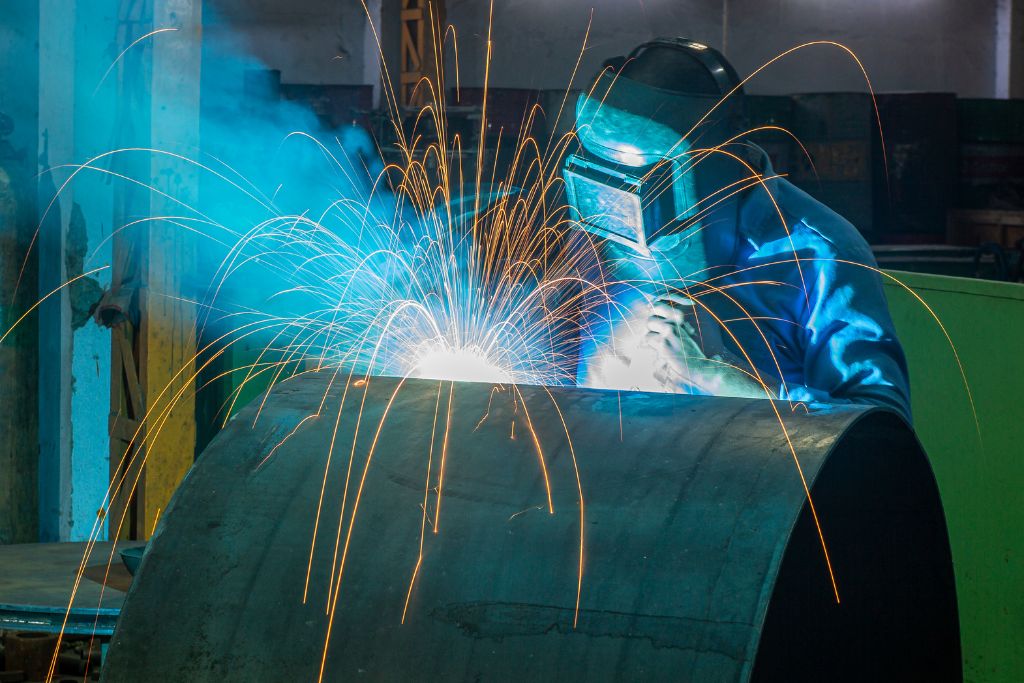Structural steel fabricators in San Antonio play an essential function within the production and engineering industries. It includes the method of transforming raw metal into structural components used in buildings, bridges, and other infrastructures.
A structural metal fabricator is responsible for this alteration, ensuring the fabricated additives meet particular standards and specs. This article explores structural steel fabricators in San Antonio Texas obligations, skills, and significance.
What is Structural Steel used for?
Structural metal fabrication is the process of cutting, bending, shaping, and assembling metal to create the additives required for production projects. These components can range from beams and columns to trusses and frames. The fabricated metal structures must be durable, secure, and able to withstand numerous masses and environmental conditions.

Key Responsibilities of a Structural Steel Fabricator
Interpreting Blueprints and Technical Drawings An essential obligation of a structural metal fabricator is to study and interpret blueprints and technical drawings. This entails knowledge of architectural designs and engineering specifications, ensuring that the fabricated components align with venture requirements. Effective collaboration with architects and engineers is vital to clarifying any ambiguities within the designs.
Material Selection and Procurement Material preference is crucial in structural steel fabrication. Fabricators must pick the proper steel type based primarily on power, weight, and corrosion resistance. They regularly liaise with suppliers of exceptional materials, keeping in mind price range constraints and venture timelines.
Cutting, Shaping, and Assembling Steel Components Once the materials are procured, fabricators use various equipment and strategies to reduce, form, and assemble the steel components. Common tools include saws, plasma cutters, and shears. Precision is critical at this level, as any inaccuracies can affect the integrity of the final structure. Quality management measures are carried out throughout the fabrication technique to ensure compliance with specifications.
Welding and Joining Techniques Welding is a vital skill for structural metal fabricators. They use exceptional welding processes, which include MIG (Metal Inert Gas) and TIG (Tungsten Inert Gas), to join steel additives collectively. Ensuring the structural integrity and safety of the welds is paramount, as those joints need to withstand full-size forces as soon as the structure is in use.
Explore Our Structural Steel Services
Equipment and Technology Used
The gear and equipment applied in structural metal fabrication are diverse and advanced. Some of the essential things technology include:
Computer Numerical Control (CNC) machines automate the slicing and shaping techniques, increasing precision and efficiency. Automated Cutting tools permit and correct cuts, minimizing waste and ensuring uniformity in fabricated elements. Programs like AutoCAD and Tekla Structures are critical for creating unique designs and managing fabrication initiatives. This equipment helps fabricators visualize the final product and streamline the fabrication technique.
Safety Standards and Regulations
Safety is paramount in structural steel fabrication. Fabricators should adhere to enterprise protection standards, such as those set by the Occupational Safety and Health Administration (OSHA). Proper training and certification are crucial for ensuring employees are knowledgeable about protection protocols and practices. This includes using non-public defensive equipment (PPE), following safe handling approaches for materials, and being privy to ability risks within the fabrication environment.
The Fabrication Process
The structural steel fabrication technique typically follows numerous essential tiers:
Pre-fabrication Planning Before fabrication starts off evolving, thorough planning is vital. This includes growing project timelines, resource allocation, and workflow management. Effective making plans facilitates mitigating delays and ensures that the mission remains on schedule.

On-site vs. Off-site Fabrication Structural steel additives can be fabricated on-site or off-site. In devoted facilities, off-site fabrication frequently allows for more excellent manipulation and reduced on-site hard work. However, on-site fabrication may be practical for massive projects where components are too big to transport. Each technique has its benefits and challenges, and the choice regularly relies upon the precise assignment necessities.
Final Inspections and Quality Assurance After the fabrication, a series of inspections are conducted to ensure that all components meet the desired specs and requirements. This first-rate guarantee method is critical for the protection and durability of the final structure.
Collaboration and Communication
Effective communication and collaboration are vital components of a structural metallic fabricator’s position. Fabricators work closely with creation teams, architects, and engineers at various stages of the venture. Clear communication helps prevent misunderstandings and ensures everybody is on the same page regarding layout changes, timelines, and materials.
The Importance of Skilled Fabricators
Skilled structural metallic fabricators are critical to the success of creation tasks. Their understanding guarantees that systems are built correctly and to the right specs. As the demand for progressive creation strategies and sustainable substances grows, the function of fabricators will continue adapting. Advanced technology, such as robotics and three-D printing, are beginning to influence the industry, imparting exciting opportunities for the future.
Read More Article: How to Estimate Structural Steel – San Antonio, TX
Future Trends in Structural Steel Fabrication
The structural metal fabrication industry is experiencing significant changes pushed via technological advancements and shifts in construction practices. Some traits to look at include:
Sustainability: An increasing number of specialist development enterprises specializing in sustainability are encouraging fabricators to explore eco-friendly materials and processes. This includes using recycled metal and minimizing waste throughout fabrication.
Digital Fabrication: Integrating digital gear and strategies is reworking conventional fabrication techniques. Techniques including 3-D modeling and digital mission control are becoming widespread, enhancing precision and efficiency.
As the industry continues to evolve, skilled fabricators will remain essential to the success of construction projects. They adapt to new technologies and practices while maintaining the highest standards of safety and quality. The work of structural steel fabricators not only supports the integrity of structures but also shapes the skylines of our cities, making their contributions invaluable to modern engineering and construction.







